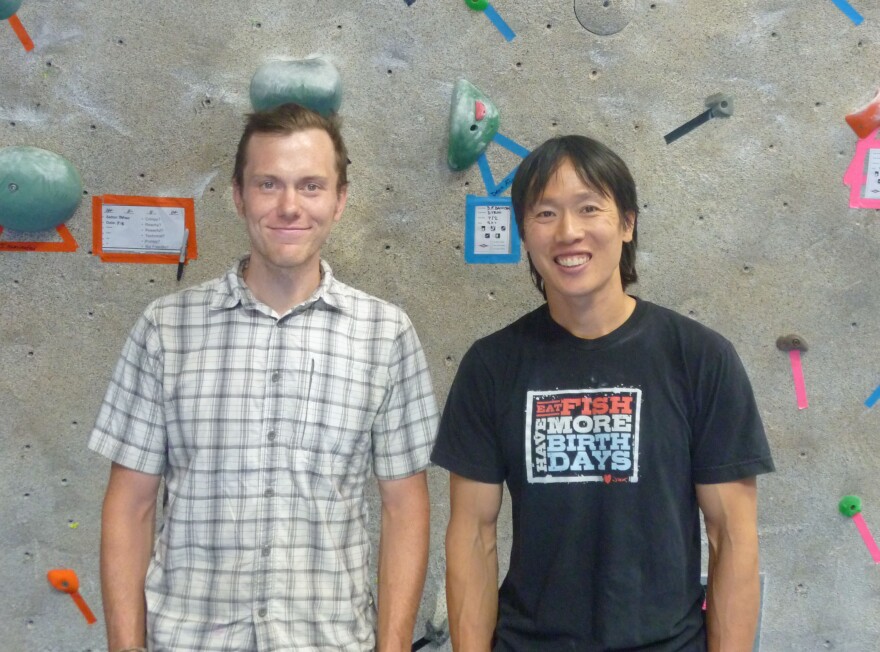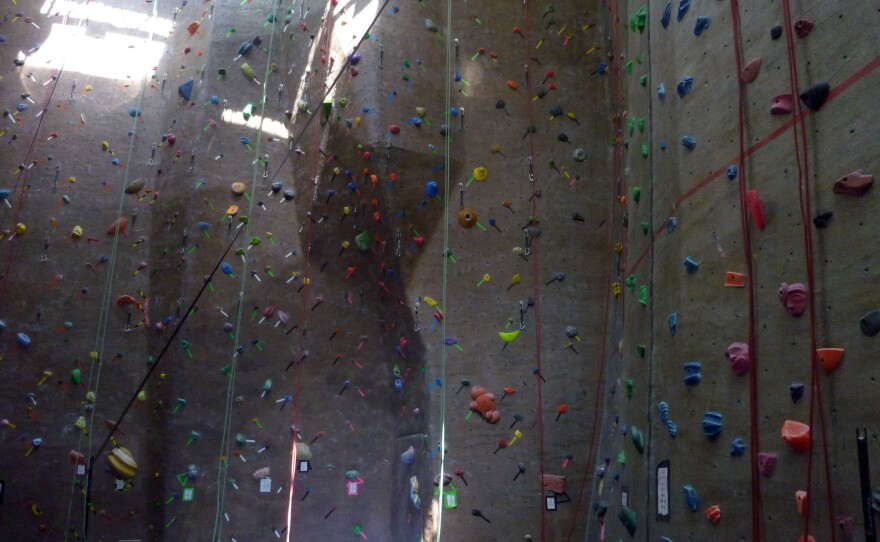Rock climbing is not on the list of sports at this summer’s Olympic Games in London. But for many Coloradans, rock climbing is a natural test of one’s athleticism—and wits. For one recent computer science graduate, rock climbing not only got him through school, but it became a topic of academic study.
The basic goal for climbers at is to make it to the top of the over 30-foot wall—and back down again—without falling.
Of course, everyone is strapped into safety harnesses. But the real challenge is to scale the wall using only some of the hand and foot holds, following a specific route.

As head route setter, it’s ’s job to create those climbs. One of his recent designs cuts across a section of wall known as the “Tsunami” that juts out at a 45 degree angle.
A Chaotic Idea
A climb of this magnitude was certainly out of ’s league when he got hooked on the sport a decade ago. But by the time Phillips was in graduate school at the , climbing was part of his study routine.
“When I got burned out on reading papers, I’d go crank on some rock climbs, and then go back and read,” says Phillips, a recent graduate of the computer science doctoral program. “It was really a great way to spend the morning.”
And that’s when the light bulb went off. Maybe math—specifically a field of math known as chaos theory—could help him use computers to design new climbing routes.
%22A%20lot%20of%20people%2C%20when%20they%20think%20about%20chaos%2C%20they%20think%20about%20randomness...%20but%20actually%20chaos%20is%20a%20very%20orderly%20thing.%22
“A lot of people, when they think about chaos, they think about randomness,” says Phillips. “But actually chaos is a very orderly thing.”
Phillips likens it to throwing a woodchip into a stream. Depending on where the wood hits the water, the path is completely different, but it’s also pre-determined. And because a chaotic system like this can be described mathematically, computers can produce these seemingly random results, which can be used to approximate human creativity.
As a graduate student at , used chaos theory to . She started with an existing piece of music, like Bach’s Prelude in C from the Well-Tempered Clavier, and then used into the piece.
“Her work was controversial because she tried to change Bach,” says Phillips. “And if you’re in music, you don’t do that.”
Caleb Phillips took a similar approach, and started with an existing climbing route. But instead of changing the order of pitches, he had his program, which he named , alter climbing moves, like a left sidepull or a right match.
“You go, and write down some information about the routes, you put it into the computer, and it’s going to come up with a variation,” explains Phillips. “It’s going to use the mathematics of chaos to mix them up.”
The Gym Test
To see if it worked, Phillips set up an experiment at Boulder Rock Club. Tony Yao and another setter designed two routes using the program, and two without.

As with the Bach variations, not everyone was a fan of using science to make art—including Yao’s fellow setter.
“He didn’t really like the program very much,” says Yao. “He found it taking away from his creativity.”
But the climbers, who were bribed with free t-shirts to test the routes, designed with the computer. For Phillips, that was more than enough.
“The idea of injecting math or computers into the middle of that, and coming out with something that’s still pleasing and aesthetic, is a really interesting and exciting thing,” says Phillips.
Since putting Strange Beta online, several hundred people have used the program. Right now Caleb Phillips is looking for ways to use that data to further refine and smooth out the suggested climbs.





